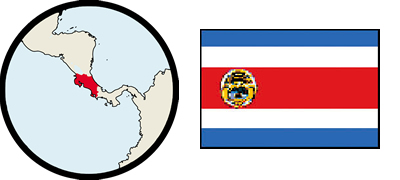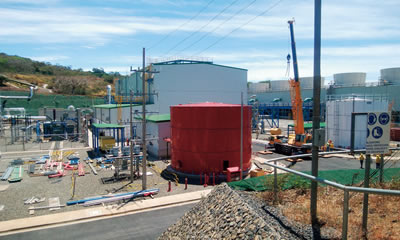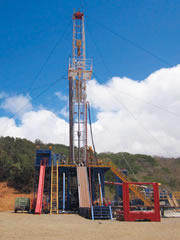There are many different approaches to fighting climate change.These projects are aimed at controlling or preparing for climate change.

Geothermal power generation key to becoming a carbon-neutral nation
Costa Rica, a Central American country, relies on hydropower generation for most of its power supply. However, in the dry season the amount of hydro power generation decreases making it necessary to generate power with imported fossil fuels to cover the shortage. Under these circumstances, Costa Rica has been developing geothermal power generation as a means to achieve stable power supply at a lower cost. Japan has been providing assistance in constructing a geothermal power station, and presently work is underway in Las Pailas, Guanacaste.
Chika Takahatake, JICA Panama Office, says, "When Las Pailas 2 is completed, it is expected to help reduce the annual greenhouse gas emissions by 14,000 tons compared with those from oil-fired thermal power generation." The great value of this project lies in the fact that the conservation of the surrounding environment and mitigation of climate change are both addressed at the same time.
"The steam pipeline and the power station building are designed and installed in consideration of the natural habitats of animals and plants, and also the surrounding landscape," remarks Takahatake. "We also implemented a technical cooperation program for evaluating the impact of the project on ecosystems accurately, collaborating and strengthening our ties with local NGOs and the government."

The site is filled with steam. Costa Rica is a volcanic country with great potential for geothermal power development. Although the estimated power generation potential is approximately 865 MW, the installed capacity has remained around 217 MW.

Drilling site for Las Pailas 2. Geothermal power uses hot water and steam taken from deep underground.

Chika Takahatake
Senior Representative, JICA Panama Office
This project is an excellent example of coexisting with the environment.




scroll